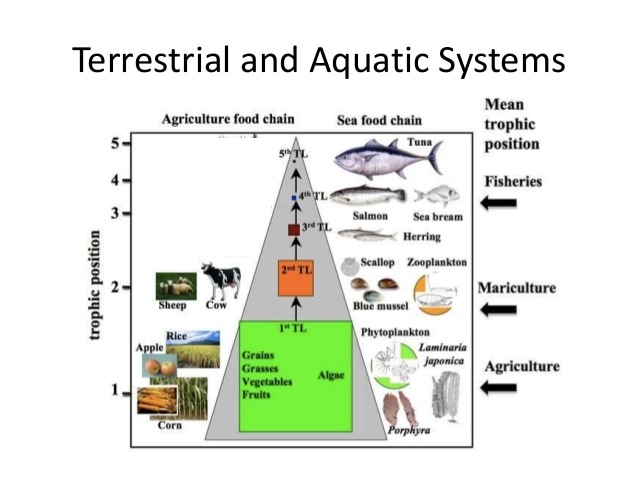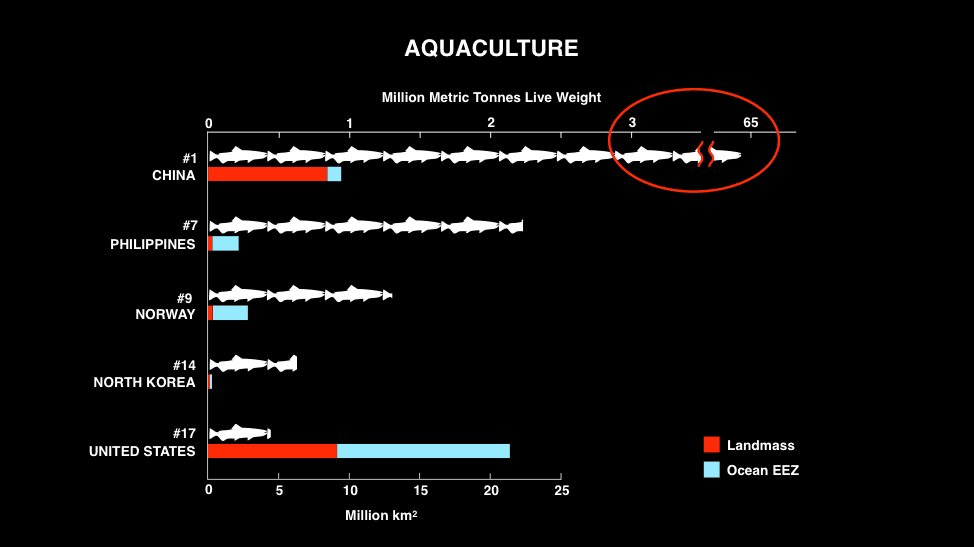Aquaculture Is Which of the Following Food Producing Process
Growing fish and shellfish in containment ponds in the ocean or along the shore Correct Answer. Carps about 899 Seaweeds about 995 Salmonids about 728 Catfish Tilapia Crabs and.

Ess Topic 4 3 Aquatic Food Production Systems Amazing World Of Science With Mr Green
Aquaculture is a steadily rising sector of the food production industry.

. Fat white tilapia the size of dinner. The shellfish farmed using these methods are filter feeders and require only clean water to thrive. Aquaculture is defined by the Food and Agriculture Organization of the United Nations as the farming of aquatic organisms including fish molluscs crustaceans and aquatic plants with some sort of intervention in the rearing process to enhance production such as regular stocking.
Farming implies some form of intervention in the rearing process to enhance production such as regular stocking feeding protection from predators etc. Is the magnitude of aquaculture production that can be supported by natural processes without causing unacceptable changes to ecological processes or to the local biodiversity and ecological connectivity is the number of particles food andor larvae arriving at one point in the system as a proportion of the particles originating from some other point. Aquaculture is the farming and husbandry of freshwater and marine animals and plants in controlled environments.
2006 and De Silva and Soto 2009 climate change effects on aquaculture have both direct eg through physical and physiological processes and indirect eg through variations in fishmeal supplies and trade issues impacts. Aquaculture is the fastest growing industry in food production and now supplies roughly half of all seafood eaten by people. Freshwater aquaculture is carried out either in fish ponds fish pens fish cages or on a limited scale in rice paddies.
Aquaculture is one of the fastest growing forms of food production. A number of aquaculture practices are used world-wide in three types of environment freshwater brackishwater and marine for a great variety of culture organisms. Marine aquaculture is just 20 percent of US.
Aquaculture includes all of the following examples except. How Agriculture Depends on Environment Learn with flashcards games and more for free. Aquaculture continues to be the worlds fastest growing food production sector exhibiting an overall growth rate of over 110 percent per year since 1984 Figure 1 compared with 31 percent for terrestrial farm animal meat production and 08 percent for production from capture fisheries.
Aquaculture is the major supplier of most of the worlds seafood products as follows. No natural process is much like plowing. Wild population will increase.
Examples of marine aquaculture production include oysters clams mussels shrimp salmon and algae. According to Handisyde et al. Aquaculture is also referred to as fish farming.
Its a similar concept to agriculture but with fish instead of plants or livestock. Aquaculture systems are affected by climate change impacts either directly or indirectly. Aquaculture is used for producing seafood for human consumption.
In a dark dank warehouse in the Blue Ridge foothills of Virginia Bill Martin picks up a bucket of brown pellets and slings them into a long concrete tank. Growing rice in. 16 Most seafood is still caught from the wild but not all wild-caught seafood is for peopleclose to 20.
One if its most important jobs is to supply food for humans. Seafood from aquaculture is replacing wild caught. Cultured fish utilize resources not used for other forms of agriculture.
Producing Enough Food for the World. Aquaculture is breeding raising and harvesting fish shellfish and aquatic plants. The Food and Agriculture Organization FAO of the United Nations defines aquaculture as the aquatic farming of marine creatures including fish crustaceans mollusks and water plants This includes intervention in the rearing process to increase output by means such as predator removal feeding and regular stocking.
Growing fish and shellfish in containment ponds in the ocean or along the shore. Shellfish farming in suspended-aquaculture is. Aquaculture the farming of waters though a millennia old tradition during this period has become a significant contributor to food fish production currently accounting for nearly 50 of global.
Production consisting mostly of shellfish eg oysters clams and mussels. Farming also implies individual or. More than Half of the Worlds Seafood Comes from Aquaculture.
Answer 1 of 2. Fish oil is a major natural source of the healthy omega-3 fatty acids eicosapentaenoic acid EPA and docosahexaenoic acid DHA. Enhancing wild fish shellfish and plant stocks for harvest.
Aquaculture is an environmentally responsible source of food and commercial products helps to create healthier habitats and is used to rebuild stocks of threatened or endangered species. Link is external. Aquaculture is the controlled process of cultivating aquatic organisms especially for human consumption.
According to the Food and Agriculture Organization FAO aquaculture is understood to mean the farming of aquatic organisms including fish molluscs crustaceans and aquatic plants. To put these numbers into perspective Aqua-Food Technologies Inc. HTM 310 QUIZ 2 WEEK 3 Question 1 2 out of 2 points Aquaculture is which of the following food producing process.
The contribution of aquaculture to global supplies of fish crustaceans molluscs and other aquatic animals3 continues to grow increasing from 39 percent of total production by weight in 1970 to 271 percent in 2000 and 324 percent in 2004. The seafood that you find at your local grocery store is likely labeled as farmed fish. Marine aquaculture refers specifically to the culturing of oceanic species as opposed to freshwater.
Feed conversion pounds feedpound gain Cattle 61. With regard to direct. Up to 10 cash back The fisheries sector in the course of the last three decades have been transformed from a developed country to a developing country dominance.
Aquaculture continues to grow more rapidly than all other animal food-producing sectors. Restoring threatened and endangered aquatic species. 7 In 2011 for the first time in modern history global aquaculture production surpassed global beef production.
Global marine and freshwater aquaculture production rose by 527 percent between 1990 and 2018 according to the United Nations Food and Agriculture Organization. Basically its farming in water. Farmers grow shellfish on beaches or suspend them in water on ropes plastic trays or in mesh bags.
Oysters scallops mussels and clams are cultured using suspension systems. The soy product usage in those aquaculture feeds would total 154mmt in 2017 and 165 in 2018. Calculated aquaculture feed production in 2017 to be 656 million metric tons MMT and is expected to grow to 686 MMT in 2018.
Aquaculture is the breeding rearing and harvesting of animals and plants in all types of water environments including ponds rivers lakes and the ocean. The sector has been found to rise at a steady expansion of 84 per year since 1970. 42 Overview of Aquaculture Methods and Practices.
More efficient use of food fish convert food to body tissues more efficiently Efficiency. The regular mixing of the top layer of the soil is precisely like what natural process. It also supports the food chain at a lower level by producing.
Fishmeal is a natural and well-balanced source of high-quality protein. As ingredients in aquaculture feed fishmeal and fish oil supply essential amino acids and fatty acids reflected in the normal diet of fish.

Aquaculture Woods Hole Oceanographic Institution
Making Fish Farming More Sustainable

Aquaculture An Overview Sciencedirect Topics

Story Map Farming In Water National Oceanic And Atmospheric Administration
No comments for "Aquaculture Is Which of the Following Food Producing Process"
Post a Comment